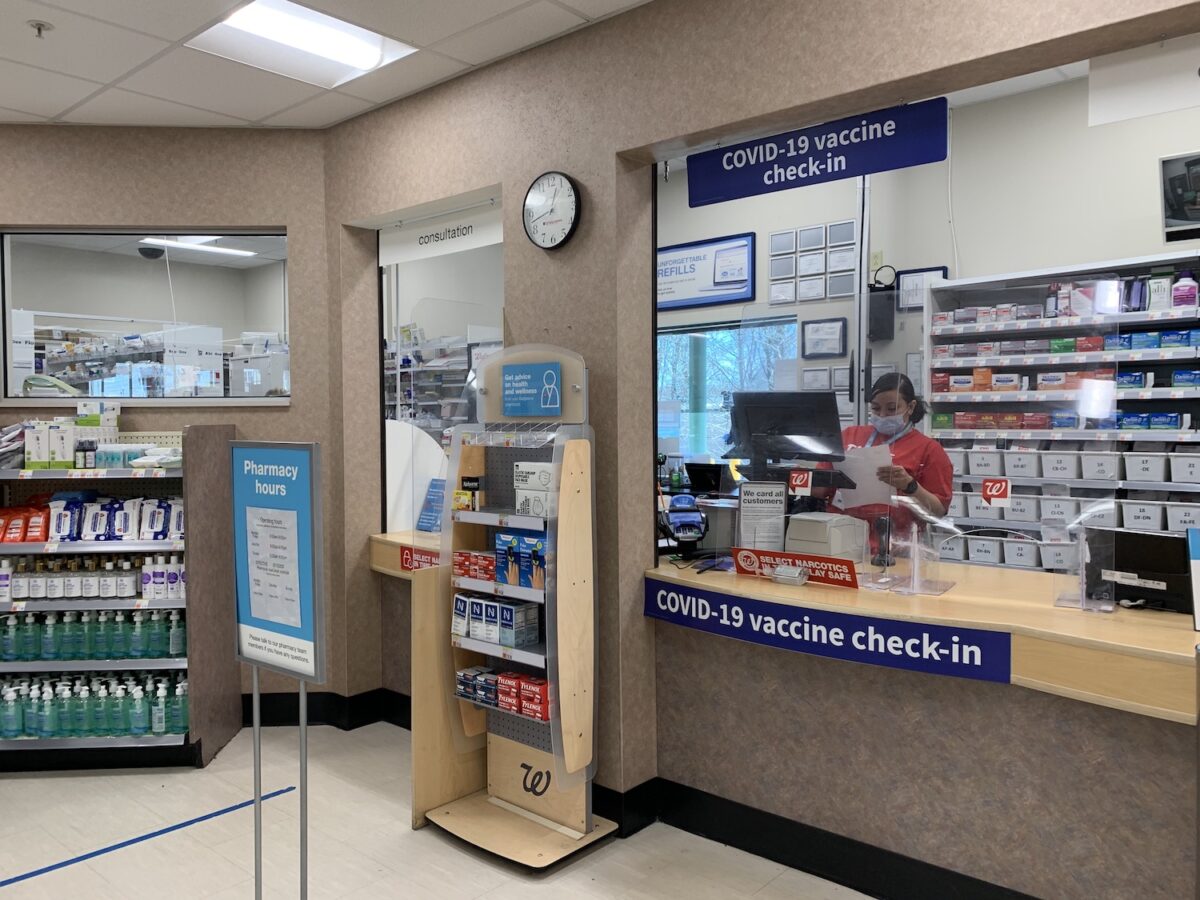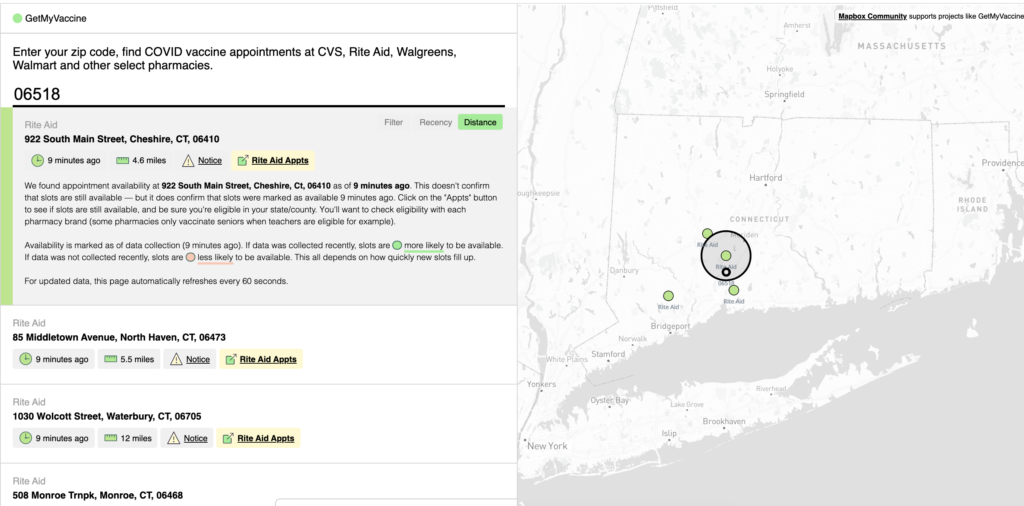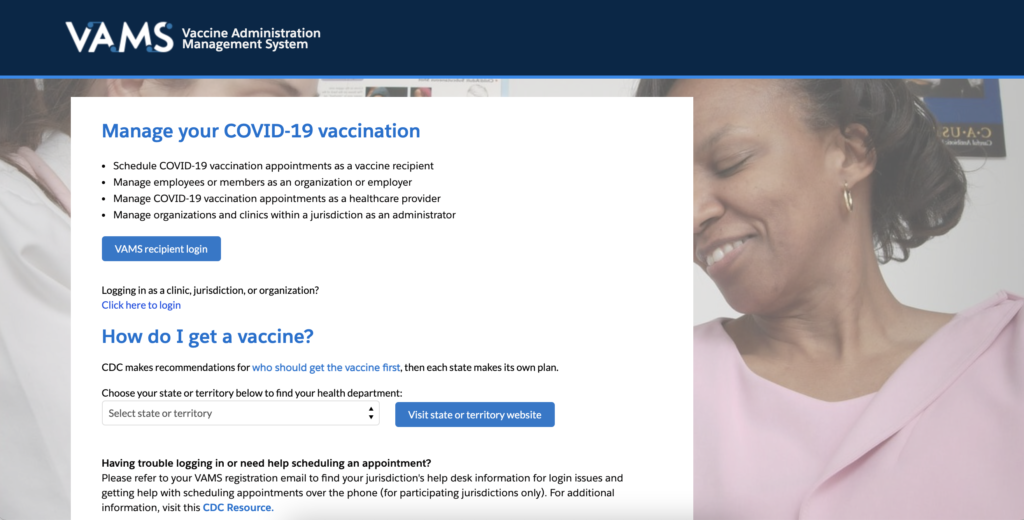On April 1, college students in Connecticut became eligible to receive the COVID-19 vaccine. Since eligibility opened up, some Quinnipiac University students have been getting the vaccine, some have tried to schedule appointments to get their first dose in the near future and others are not as interested in getting it.
Emma Atkinson, 20, senior advertising and integrated communications major, is one student who got the Pfizer vaccine in Connecticut.
“Once I realized that I would be eligible in Connecticut because I was a student here I went on the Connecticut government website to find the vaccine,” Atkinson said. “I signed up for the notification service because when I first logged on there were no appointments available anywhere.”
Originally from Melrose, New York, Atkinson had an appointment to get the vaccine in her home state on May 12. However, she got the chance to get the vaccine earlier in Connecticut due to her student status, and was able to move her appointment up to April 6, to get the vaccine at a Walgreens in Wallingford.
Thanks to her roommate, Atkinson was able to register for her vaccine shot right away.

“They must have gotten a new shipment in or something, so she came running in my room yelling and screaming about the vaccine and told me to get on the Walgreens website and I ended up getting an appointment for two days later,” Atkinson said.
Rachel Margolin, a 21-year-old junior occupational therapy major got the first dose of the Pfizer vaccine on April 5, at a Walgreens in New Haven. Margolin has been interested in getting the vaccine since the beginning.
“I’ve wanted to get it all along. I want this all to be over,” Margolin said. “As a health science student I believe in it and how it works and wanted to do my part to keep myself and others safe.”

For 20-year-old junior health science major Alex Holle, the main reason for getting the vaccine was due to his job which allowed him to get the first dose of the Moderna vaccine on Jan. 16, and the second dose in February at MidState Medical Center.
“I work in the emergency department at Saint Mary’s so there are often people that come in complaining of COVID like symptoms or who have tested positive for COVID,” Holle said. “I’m in contact frequently, so I just wanted to get it so I could protect myself and the people around me.”
Holle said that even if he didn’t work at Saint Mary’s, he would still want the vaccine when it became his turn. Originally from North Haven, Holle would have become eligible on April 1, with his college student status and Connecticut residency.
While Margolin and Atkinson could not wait to sign up for vaccine appointments, there were other students like 22-year old senior criminal justice major Jared Mazzolla who are currently passing on the shot.
“I’m not an anti-vaxxer by any means, but I don’t want to get the vaccine,” Mazzola said. “It’s not that I don’t want to get it, it’s that I want to wait a while before thinking of getting it just because of how long it takes to actually develop a vaccine. It seems like it was pretty quick — there’s just not enough information to the general public.”
Mazzola, from Katonah, New York, said he would probably get the vaccine if it was mandatory for school and other activities, but if he could go to school and travel without it, he would probably never get it.
“I think I am more concerned with the long-term effects,” Mazzola said. “I think I have a healthy immune system in that it wouldn’t necessarily affect me now. I think maybe in five or ten years would be where we start seeing some of the long term effects.”
Atkinson, on the other hand, said she felt comfortable getting the shot and did not fear any long-term effects.
“It’s recommended by all the medical professionals that the best way to help end the pandemic and stop the spread of COVID-19 is to take care of yourself and go and get yourself vaccinated so that there is less chance of you getting it and less chance of you spreading it,” Atkinson said.
Margolin, who is from Wilmington, Delaware, would not be currently eligible for the vaccine if it weren’t for the Connecticut student status, which made students eligible on April 1. While Holle had no issues finding his appointment back in January, Margolin was looking for appointments right when they opened up but came up empty.
“I was looking on April 1 right when it opened but could not find any,” Margolin said. “My mom was really on top of it looking for appointments for herself and friends and she found a lot of appointments on getmyvaccine.org.”
Atkinson, Margolin and Holle all had arm soreness after receiving the vaccine. While Atkinson felt tired and run down the day of, Holle had a fever. Margolin had some nausea, but wasn’t sure if it was because of the vaccine itself or Margolin’s excitement about finally getting vaccinated.
Although Atkinson was able to get an appointment just a few days after becoming eligible as a student, she said she might have been eligible even earlier, but had a hard time determining her status.
“I actually think I might have been eligible to get the vaccine earlier because of an underlying and prior condition but the guidelines for that on the CDC were so vague, and what I have, my condition is really rare, so I wasn’t actually positive if I was eligible to get it,” Atkinson said.
As vaccine eligibility continues to open up, Atkinson and Margolin both encourage others to get vaccinated.
“I hope everybody gets it just because it will make getting things back to normal, or as normal as possible a lot easier and happen a lot sooner,” Atkinson said.
As for Mazzola, just because he is not interested in the vaccine right now doesn’t mean he has not ruled out getting it in the future when more research has been done.
“Maybe in like ten years after it has been in cycle, which is how long it takes to really develop a vaccine, so if this were still an issue I’d probably get it,” Mazzola said.






